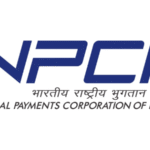India’s Insurtech Sector Poised to Cross $1 Billion in Private Funding Within a Year

India’s insurtech industry is entering a critical phase of transformation, with private funding expected to exceed $1 billion over the next 12 months, emerging data indicates. This surge marks a sharp turnaround following more than a year of subdued investor activity.
A jointly commissioned study by advisory firm The Digital Fifth and fintech SaaS provider Perfios forecasts a strong rebound in insurtech investment, underpinned by growing confidence in digital insurance platforms. After 2021’s peak funding of $820 million, capital inflows dropped to around $239 million in 2024, reflecting a strategic shift toward consolidation and sustainable growth. As of mid-2025, total capital raised stood at a modest $114 million, emphasizing continued restraint despite renewed optimism.
The report—titled “Reimagining Insurance: India’s Leap into the Future of Insurance”—highlights that insurtech is gradually reshaping India’s insurance ecosystem. Covering trends in embedded insurance, claims automation, AI underwriting, and platform-based distribution, the study identifies five pivotal shifts: insurer‑led tech investment, journey-level digital transformation, government-backed infrastructure, dynamic data-driven distribution, and evolving regulatory frameworks.
Despite significant digital progress, insurance penetration remains low—just 3.7% overall in FY24, with life insurance at 2.7%—far below global averages. Total industry premiums surpassed ₹11.19 trillion in FY24, but digital channels still account for only a sliver of new business. This gap underscores both a massive opportunity and the imperative for innovation in customer onboarding and claims experience.
Much of the funding in recent years has been concentrated in distribution-led models. The top segment in 2025 so far, with approximately $80 million deployed, focuses on outreach and customer acquisition. In contrast, tech‑stack infrastructure, claims automation platforms, and underwriter-centric SaaS solutions attracted less attention—despite being recognized as central to efficiency and user trust.
Leading insurtechs such as Acko, Policybazaar, Digit Insurance, Navi, and InsuranceDekho have drawn the majority of industry funding. Together, these firms—alongside 150+ startups operating in the sector—are driving innovation in instant underwriting, usage-based policies, health-tech integration, and embedded insurance experiences.
Analysts believe that the next wave of capital will target underexplored segments including operational platforms, risk analytics engines, fraud detection tools, and integrated claims management systems. These technologies are essential to raise customer satisfaction, reduce processing times, and anchor long-run profitability.
Industry observers also point to enabling policy shifts that are bolstering investor confidence. The Union Budget 2025 proposal to lift the foreign direct investment cap to 100%—with certain conditions—has created future runway for global insurers and strategic partners to invest in Indian startups. Additionally, government initiatives like the National Health Claims Exchange (NHCX) and the Bima Sugam aggregator platform are being hailed as foundational for scaling digitization.
Looking forward, experts predict that sustained capital inflow—particularly in infrastructure innovators and claims-tech verticals—could elevate India’s insurtech sector back toward its 2021 highs and beyond. But they caution that success will depend on startups building robust, scalable business models that focus on profitability, compliance, and customer-centric execution.
In summary, the expected surge of $1 billion in private funding over the next year signals renewed momentum for India’s insurtech ecosystem. With insurers, regulators, and investors aligning around technology-led modernization, the industry is entering a phase of disciplined growth, innovation, and digital-first insurance models poised to reshape financial inclusion in India’s long-tail market.
















